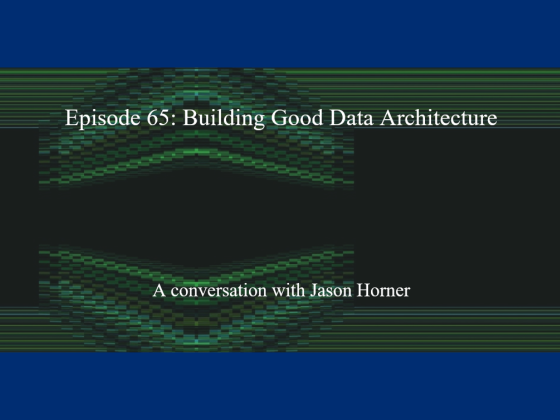Building a Great Data Architecture
Does your organization use a data warehouse? Maybe you have a cube but find it hard to maintain? This week on the SQL Trail, Steve and I chat with Jason Horner about building a good data architecture. When talking about a data warehouse architecture, or even just a data architecture, people often think about building the data warehouse and specifying the server hardware, building the ETL, things like that–they tend to lose sight of the larger picture of data architecture. Jason gives us his “four pillars of data warehouse architecture” and how each of them impacts what you are able to do from a reporting prospective.
Follow @JasonHorner on Twitter
[Free Training] Data Warehouse Implementation with SQL Server Jumpstart
[Article] Building a Data Warehouse with SQL Server
[Article] SQL Server Data Warehouse Cheat Sheet
Listen to Learn
- Jason’s four pillars of data warehouse architecture
- Why most warehouse are organic, rather than planned
- How building a data warehouse is like building (or rebuilding) a house
- Important recovery factors for a data warehouse
- Why Jason thinks you should start your data dictionary in Excel
- Why Jason says your data lake can be an intermediary stop for your data warehouse
- The value of using source control for your data schema
Our Guest

Jason Horner
Jason Horner is a Microsoft Certified Master of SQL Server and has worked with it for more than 10 years. He began work as a DBA/Application Developer in 1999. He made the transition to delivering BI solutions in 2002 and began working with spatial data in 2008. Jason’s latest focus has been architecting large-scale spatially enabled BI solutions.
Whether it’s actual doing the dimensional modeling and making sure that you have a good dimensional model, that’s the number one thing that helps with data warehouse performance.
Meet the Hosts

Carlos Chacon
With more than 10 years of working with SQL Server, Carlos helps businesses ensure their SQL Server environments meet their users’ expectations. He can provide insights on performance, migrations, and disaster recovery. He is also active in the SQL Server community and regularly speaks at user group meetings and conferences. He helps support the free database monitoring tool found at databasehealth.com and provides training through SQL Trail events.

Eugene Meidinger
Eugene works as an independent BI consultant and Pluralsight author, specializing in Power BI and the Azure Data Platform. He has been working with data for over 8 years and speaks regularly at user groups and conferences. He also helps run the GroupBy online conference.

Kevin Feasel
Kevin is a Microsoft Data Platform MVP and proprietor of Catallaxy Services, LLC, where he specializes in T-SQL development, machine learning, and pulling rabbits out of hats on demand. He is the lead contributor to Curated SQL, president of the Triangle Area SQL Server Users Group, and author of the books PolyBase Revealed (Apress, 2020) and Finding Ghosts in Your Data: Anomaly Detection Techniques with Examples in Python (Apress, 2022). A resident of Durham, North Carolina, he can be found cycling the trails along the triangle whenever the weather's nice enough.
Want to Submit Some Feedback?
Did we miss something or not quite get it right? Want to be a guest or suggest a guest/topic for the podcast?
